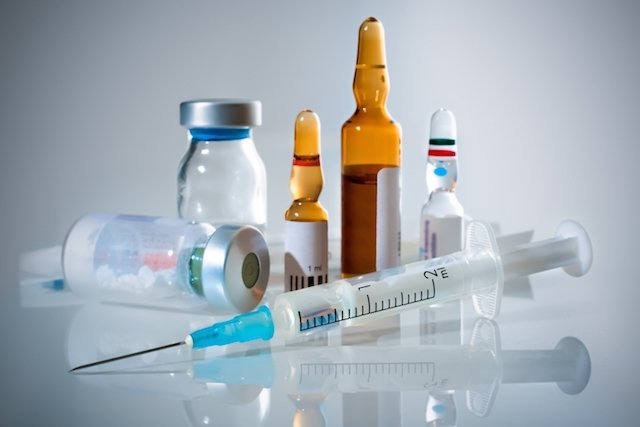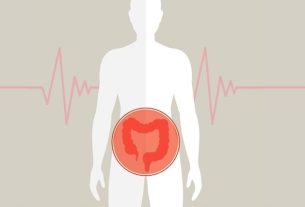Treatment for leishmaniasis can be done with medications to eliminate the parasite, such as meglumine antimoniate, amphotericin B, pentamidine and pentoxifylline, which are indicated by the doctor according to the type and severity of the disease.
Leishmaniasis is an infectious disease caused by the parasite Leishmania spp. which is transmitted by the bite of a mosquito known as a sandfly and can cause damage to the skin, mucous membranes and internal organs. Learn more about leishmaniasis.
If leishmaniasis is suspected, it is recommended to consult an infectious disease specialist, who is the best doctor to guide the treatment of infectious diseases and the care that should be taken in the case of leishmaniasis.

Most recommended remedies
The most recommended remedies for the treatment of leishmaniasis are:
1. Meglumine antimoniate
Meglumine antimoniate is a medicine from the group of pentavalent antimonials that can be indicated in the treatment of cutaneous and mucocutaneous leishmaniasis, which is when wounds also appear on the mucous membranes.
It can be used as an injection directly into skin lesions in cases where the lesions are small and localized. However, in the most serious cases, it must be used directly into a vein or by intramuscular injection.
This medicine can cause side effects, such as arrhythmias, body aches and lack of appetite, and is contraindicated in pregnant women. Furthermore, they are not recommended for people with kidney or liver failure and heart problems, for example.
2. Amphotericin B
Amphotericin B is a potent antibiotic against the leishmaniasis parasite and is most suitable for the treatment of visceral leishmaniasis. However, it can also be used for cutaneous or mucocutaneous leishmaniasis, especially in severe cases.
This antibiotic is normally injected directly into a vein and can cause side effects such as fever, headache, low blood pressure, nausea and/or vomiting and changes in blood mineral levels, for example. Learn about other side effects of amphotericin B.
3. Pentamidina
Pentamidine is a medication with antiprotozoal action that may be indicated in the treatment of cutaneous or mucocutaneous leishmaniasis. It can be used directly into a vein or by intramuscular injection.
However, it is not considered the first choice in the treatment of leishmaniasis, and is normally indicated in case of lack of other medications or contraindications to them.
This medicine is not recommended for pregnant or breastfeeding women, children under 1 year of age and people with diabetes, kidney or liver failure and heart problems, for example.
4. Pentoxifylline
Pentoxifylline is a vasodilator medication that also has an immunomodulatory effect and can be used in combination with other medications to accelerate the treatment of cutaneous leishmaniasis in some cases. Understand better what pentoxifylline is and what it is for.
This medicine can cause side effects such as redness and a feeling of heat in the face, nausea and/or vomiting, itching of the body, low blood pressure and cardiac arrhythmias, and should not be used without medical advice.
Care during treatment
During treatment for leishmaniasis, care may be indicated, such as dressing and cleaning the wounds, to avoid infections. Additionally, a diet with more proteins and calories may be recommended, especially in cases of malnutrition to speed up recovery.
In some cases, treatment can be done at home as long as the person is able to go to the hospital to receive medication and be monitored by a doctor.
However, it may be necessary to undergo treatment in hospital especially if:
- Anemia and/or severe malnutrition;
- Intense or prolonged diarrhea;
- Bleeding;
- Diseases such as high blood pressure and kidney or heart problems;
- Children or elderly people;
- Little response to initial treatment or return of the disease after treatment.
Furthermore, it is common for people to have regular follow-ups with their doctor in the first year after treatment to ensure that the disease has not returned.
Signs of improvement and worsening
Signs of improvement may appear after the first week of starting treatment and are characterized by a decrease in fever, a reduction in a swollen belly, weight gain and recovery in mood.
On the other hand, when treatment is not started quickly or is not carried out according to medical advice, symptoms such as an increase or return of fever, weight loss, weakness, infections and bleeding may appear.
Bibliography
- CLEVELAND CLINIC. Leishmaniasis. Disponível em: <https://my.clevelandclinic.org/health/diseases/24539-leishmaniasis>. Acesso em 21 set 2023
- MINISTRY OF HEALTH. Tegumentary leishmaniasis surveillance manual. 2017. Available at: <https://bvsms.saude.gov.br/bvs/publicacoes/manual_vigilancia_leishmaniose_tegumentar.pdf>. Accessed on 21 Sep 2023
- STATPEARLS. Leishmaniasis. 2023. Available at: <https://www.ncbi.nlm.nih.gov/books/NBK531456/>. Accessed on 21 Sep 2023
- TORRES-GUERRERO, Edoardo et al. Leishmaniasis: a review. F1000 Res. Volume 6. 750, 2017
- NEVES, David P. Human Parasitology. 12 ed. Athenaeus, 77-78.
- MINISTRY OF HEALTH. Visceral Leishmaniasis: what it is, causes, symptoms, treatment, diagnosis and prevention. Available at: <http://portalms.saude.gov.br/saude-de-az/leishmaniose-visceral>. Accessed on May 30, 2019

Sign up for our newsletter and stay up to date with exclusive news
that can transform your routine!
Warning: Undefined array key "title" in /home/storelat/public_html/wp-content/plugins/link-whisper-premium/templates/frontend/related-posts.php on line 12
Warning: Undefined array key "title_tag" in /home/storelat/public_html/wp-content/plugins/link-whisper-premium/templates/frontend/related-posts.php on line 13




